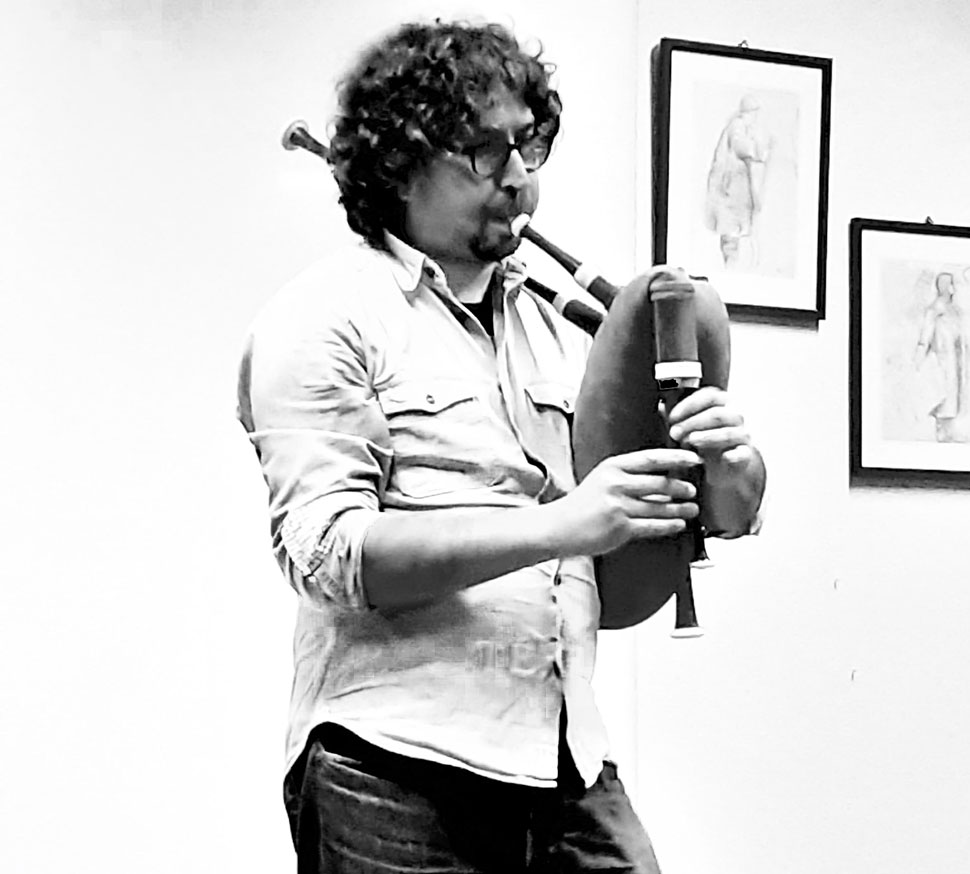Daniele Bicego
He began his musical career as a French horn student; graduating in 1995, he started collaborating with numerous symphony orchestras including Teatro alla Scala, Orchestra G. Verdi, Orchestra della RAI di Milano, Orchestra Regionale Toscana, Teatro Comunale di Firenze, Teatro S. Carlo di Napoli, OSER G. Toscanini di Parma, G. Mahler Jugendorchester Wien. Around 2000, he began playing bagpipes, flutes, and other instruments, performing in ancient music and folk formations for various Italian festivals and international events in Spain, France, Andorra, Switzerland, Germany, and Ireland.
He has had the opportunity to share the stage with important international artists such as Michael Mc Goldrick, Tiarnàn O’Duinnchinn, Nuala Kennedy, and participate in recordings of various musical genres: from folk with Baraban, Tre Martelli, the Faravelli-Burrone duo, Vincenzo Zitello to progressive, rock, and blues music albums. Currently, he is active with musician and cabaret artist Flavio Oreglio, producing two recordings for which he has also supervised arrangements and studio work for the Long Digital Playing label. Overall, he has played on about 40 music albums.
His main commitment, however, is focused on the müsa, an ancient instrument from the Quattro Province area, on which he recently published the book “Cantami o Müsa” which he will present in Vialfrè.
He was invited as a speaker to the symposium organized by the International Bagpipe Society in Mallorca in 2018, and has conducted bagpipe courses in numerous settings.
For years, he has been engaged in a reconstruction activity dedicated, in addition to Irish uilleann pipes, to the instruments of Northern Italy that he has studied: the Bergamo baghèt, the Emilian Apennine piva, and of course the müsa; he also organizes exhibitions and concerts for educational purposes with his extensive collection of wind instruments from all over Europe.
| Atelier musicali: Cornamusa | Martedi / 17:30 / Gazebo 2 |
| Giovedi / 10:30 / Gazebo 2 | |
| Conferenze e dibattiti: Cantami o Musa. La cornamusa delle Quattro Province | Giovedi / 20:30 / Palco 3 |
| Atelier musicali: Cornamusa | Martedi / 17:30 / Gazebo 2 |
| Giovedi / 10:30 / Gazebo 2 | |
| Conferenze e dibattiti: Cantami o Musa. La cornamusa delle Quattro Province | Giovedi / 20:30 / Palco 3 |
